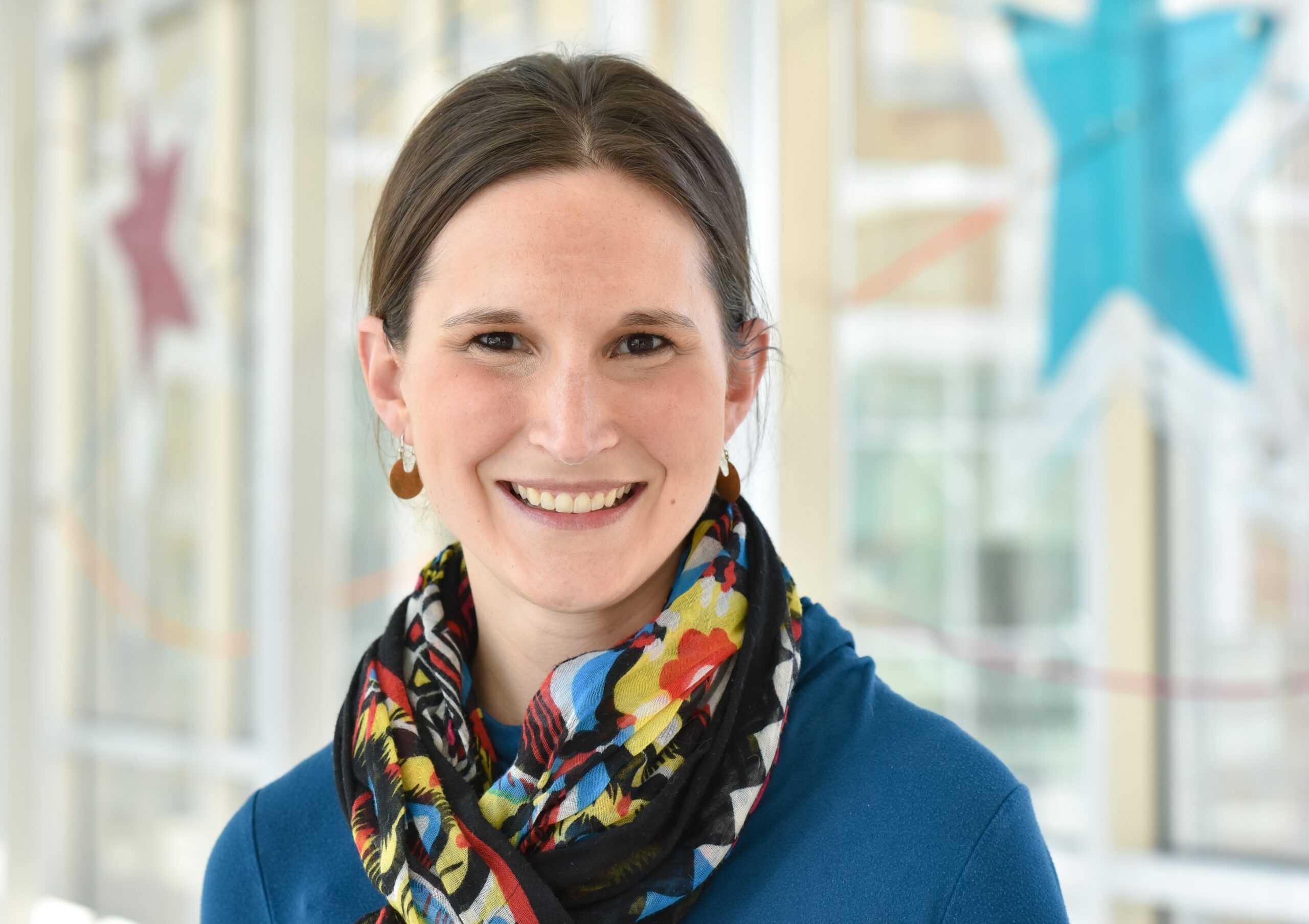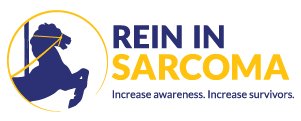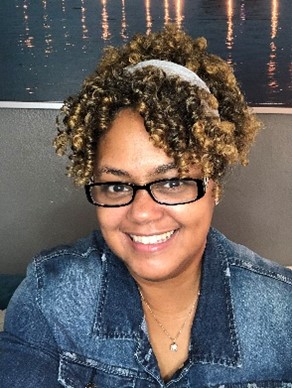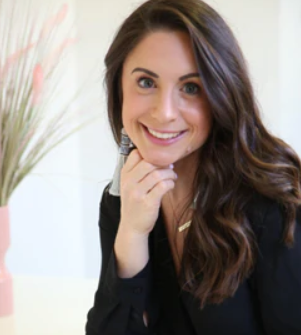
Type of Sarcoma: Osteosarcoma
Date of Diagnosis:
Location: Leg
Dr. Jen Pratt’s experience with childhood osteosarcoma 30 years ago inspired her to pursue a career in medicine. She is now a pediatrician and director of Graduate Medical Education at Children’s Minnesota. For the past 12 years, she has practiced pediatric hospital medicine at Children’s Minnesota, the same hospital she received life-saving treatment as a child.
Dr. Pratt shared her inspirational story in her own words with the RIS community “While our journeys are unique, the power of this shared experience bonds us together in a profound way.
When I think about my sarcoma story, I like to break it down to the before, the during, and the after.
Going back to the early 90s, I was a typical 10-year-old girl. My family lived just outside of St. Paul and as a true Minnesotan, I grew up figure skating, skiing, and enjoying cabin time in the summers. I mostly got along with my 5-year-old sister. As the tallest kid in my class, I was a natural basketball player and had just come off a memorable season on my local traveling team. I had big dreams. Life was simple, and it was very good. This was my before. And as many of you know, one day changed everything.
I remember it clearly. Waking up at night to a deep pain just above my knee, clutching my leg, hoping it would go away. Was it a sports injury? Growing pains? Something wasn’t right, but it was probably fine… right? After it became clear my knee pain wasn’t going away, I visited my pediatrician. An x-ray was done and there it was. A bone tumor. By the afternoon, I was at St. Paul Children’s. The office door read: Pediatric Hematology Oncology. I knew something was wrong, but it was going to be fine… right? As I sat on top of a dinosaur exam table and the oncologist with the deep laugh and kind demeanor stepped in, carefully examining my leg and slapping the X-ray films up on the wall, I felt a sense nervous calm. Perhaps it was the calm before the storm… because the storm, it was coming. And the next part, well it was a blur. The words “probably cancer,” “biopsy,” and “may need chemotherapy” were heard between the tears of my parents. At that point, I knew this was serious. The doctor put his hand on my shoulder looked me in the eye and said, “It’s going to be okay.” I believed him. And I knew I would fight and I would fight hard.
The next week was a whirlwind of tests and doctor’s appointments. Biopsy results revealed the diagnosis: osteosarcoma. A treatment plan was quickly orchestrated – a port was placed and I was set to start chemotherapy ASAP. Discussions around side effects – losing my hair – and possible amputation were had. Perhaps the most heartbreaking moment though was being handed crutches, as weight bearing was too risky. I could no longer join my teammates on the basketball court or compete on ice. I couldn’t walk at all. My life as I knew it – my aspirations, my passions – were forever changed. And now it was a fight, just to survive.
But what came next was something remarkable. I saw some of the best of humanity – of my community – come together to lift me up and support me and my family through this journey. And the most powerful connection came from other families facing similar challenges. I remember their names, faces, and stories like it was yesterday. My friend Lukas, an older boy with osteosarcoma who was known to target unsuspecting nurses and doctors with squirt guns. My friend Brianna, who had Ewing’s sarcoma of ankle and underwent an amputation. There was a shared understanding between us. And we were no longer fighting alone.
As I moved through treatment, things didn’t always go as planned. A severe chemotherapy reaction landed me in the ICU where I needed a breathing tube, dialysis, and medication to support my blood pressure. I was very sick, but I kept going. Over the next year, I had countless hospital stays for chemotherapy, limb salvage surgery, and for fevers, low blood counts, and transfusion support. It was nearly a year until I would walk again, and the physical therapy was grueling and painful. As the days passed, I developed a profound respect and admiration for my medical team – doctors, nurses, physical therapists, child life staff – they were all incredible. I reached the end of my initial treatment, I was filled with gratitude for the care I received and for the connections I made with other patients and families. They gave me the motivation and strength to keep going – they gave me hope.
Now… for the “after.” I brought my childhood journal with me today. This entry is from April 17th, 1996, nearly 1 year after I completed treatment, written when I was 12 years old:
“I had another surgery on my leg last week. It went well and I’m feeling better. I think the human body is so fascinating. I hope I become a doctor when I grow up. It would be so nice to make a positive difference in someone’s life.”
There’s a Maya Angelou quote I’ve always appreciated: “People will forget what you said, people will forget what you did, but people will never forget how you made them feel.”
After finishing treatment, I remained connected to the hospital, mentoring other teens battling cancer and volunteering in the clinic. But as the years went on, my circle of fellow sarcoma friends dwindled. It goes without saying that loss and grief is unfortunately a part of the journey for many – and I know many of us in this room have been impacted by loss of a loved one.
Into my teen years, it was deeply important for me to honor the legacy of those lost by continuing to connect with those who were in the thick of their treatment. At age 16, I was quoted by the Pioneer Press: “One of my biggest goals is to give back what I got. I want to take my negative experience and do something positive with it. Having cancer deepens your sense of life. You learn to live each day. To take each opportunity. You want to live life to the fullest.” In the “after,” we all must carry on, and the way we approach life is forever changed.
Being positively inspired by my own medical team, I knew that the next step in my journey would be medical school. More than anything, I wanted to become a pediatrician and serve as an integral part of a hospitalized patient’s care team, understanding firsthand the transformative power of hope on a patient and family’s experience. After graduating medical school in Chicago, I came back “home” to complete my residency training at the University of Minnesota.
I was able to learn from the fantastic pediatric heme/onc team and was exposed to brilliant researchers, clinicians, and skilled surgeons right here in the Twin Cities. I developed an appreciation and understanding of science as well as the financial support needed to resource more effective therapies with less toxicity – which we all know is vital to improve the outcome of those with a sarcoma diagnosis.
After completing my training, I knew I wanted to practice medicine at the same hospital that I received such remarkable care – Children’s Minnesota. I joined the pediatric hospital medicine group in 2013. As I stand today in the same spaces that I received care, walk the halls that I previously was pushed down in a wheelchair, and have hugged retiring nurses and therapists that supported me on my road to recovery decades ago – I know, I am home.
I have since also taken the role of Graduate Medical Education Director and oversee over 800 trainees annually who come to Children’s Minnesota for their clinical education. Some of them will become primary care providers who may be the first to detect a sarcoma, others will go on to pursue oncology and will guide patients on their treatment journey, some will become surgeons who will improve functional outcomes of sarcoma patients, and perhaps a few will become physician scientists who will discover the next breakthrough in therapy.
As I celebrate 30 years since my diagnosis, I am overwhelmed with gratitude and hope – for my own health, for those of you supporting the vital mission of Rein in Sarcoma, and for what the future holds. There is much that needs to be done, but I know we’re all up to the challenge.“


